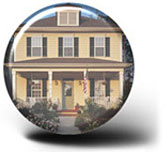
It shouldn’t really surprise anyone that housing doom and gloom is continuing into Q2 2011. The leading indicators were certainly bearish, AFG had this to say in early May.
AFG, Australia’s largest mortgage broker, has called on the Government to address weak consumer confidence, after figures for April showed mortgage sales fell by nearly 10% compared to April 2010. AFG processed $2.1 billion in mortgages in April 2011 compared to $2.3 billion in April last year and $2.8 billion in April 2009.
Month on month figures showed an even larger fall of 15.6% – but this drop in volume also reflects the impact of the extended Easter and Anzac public holidays. On a volume per business day basis, April was somewhat higher ($117 million) than March ($111 million), but both these figures are well below those recorded in previous years.
So once again it really isn’t unexpected to read that the flow-on effects into the actual market have been anything but positive.
HOUSE property values fell in all Australia’s capital cities in April. Sydney’s fell 0.3 per cent to a $667,500 median, the third lowest fall. The city had a 0.6 per cent drop during March.
”The magnitude of the corrections are not extreme, and is not a cause for alarm at this stage,” a Residex forecaster, John Edwards, said. ”But it is very unusual to see the total market in a correction phase.”
The last time all the capital cities were in a downturn was June 2008, during the global financial crisis. Before that it was June 1990, when Australia was heading into recession.
”Both times before, the reasons for the downturn were much more obvious,” Mr Edwards said.
Arguments about methodologies aside, that last point is very interesting. Both the previous times that housing behaved this way were just before significant economic downturns. Some in the real estate business may be wondering if we aren’t already there.
Real estate agents are having to slash their sales commissions to win property listings as conditions in Melbourne’s housing market worsen. Home owners are demanding cuts on commissions that are saving them thousands of dollars in fees. But some agents warn the discounting could lead to poor service and lower sale prices.
Commissions are charged up to 3 per cent of a property’s sale price, although the rate is negotiable and can vary widely. Industry sources say commissions are now being cut by up to half, with the biggest discounts being offered in the competitive inner and middle suburban market.
For example, a house that sold for $750,000 on a 2 per cent commission would generate a fee of $15,000. On a 1 per cent commission, the fee would fall to $7500. David Morrell, of buyers advocacy group Morrell & Koren, said commissions in pricey inner city areas had fallen to about 1.5 per cent or lower, with some agents willing to accept less than 1 per cent to secure the listing of a premium property.
”It’s getting feral out there. They are doing it because they’ve got to keep feeding the factory, they’ve got to keep the numbers coming through and it’s just not happening,” Mr Morrell said.
As I have spoken about previously as the market tightens towards a downturn “experts” appear claiming that the slow market will lead to upward pressure on rents, but that is simply not the case of what actually happens in a falling market.
Vacancy rates across the country jumped during April, according to new figures from property research firm SQM, bolstering the opinion that more stock is filling the market and continuing to put downward pressure on prices.
The numbers also come just weeks after similar research from SQM found national stock levels of property has increased by 68% over the past year – and doubled in Melbourne.
The new figures show national vacancies rose from 1.6% in March 2011 to 1.8% in April. Vacancies have risen 1.4% over the last year. The highest vacancy rates were found in Melbourne at 2.5%, followed by Darwin at 1.8%, Hobart at 1.7% and Adelaide and Sydney at 1.4% each.
Overall, there are 47,787 properties vacant, up by 6,135 compared to last month and by 10,177 over the past year.
One of the other interesting myths about real estate downturns is that it doesn’t really effect the rich because they are believed to have the ability to absorb the losses. While that maybe true for the likes of Buffet and Gates, for upper class of Australia that is certainly not the case. In the midst of a boom people who earn $100K buy a $500K house, those who earn $300K buy a $2mil house. The effect when the boom ends is somewhat the same.
Mortgage pain is not just for Aussie battlers, with a hidden but growing number of high-income households suffering financial stress this year. The chief executive of Resi Mortgage Corporation, Lisa Montgomery, says evidence is mounting that high-income earners are experiencing mortgage problems but nobody, especially the affected borrowers, is talking about it.
“High-income earners who are financially overstretched are quietly making lifestyle changes, deleveraging (cutting debt) and selling investments in their bid to reduce loans and other debt, and avoid unwanted public attention they would have if they had to foreclose on their mortgage,” Montgomery says.
Statistics released in recent weeks highlight the problems facing borrowers. Major banks have warned that loan arrears have increased, real estate data shows house prices in affluent suburbs have fallen more than the overall market and new loans have dropped sharply.
Banks are traditionally more willing to lend large sums to high earners, for both expensive homes and extra investments in shares and other properties, which means the 2 per cent rise in mortgage rates in the past two years has had a nasty effect on their repayment levels.
Leading indicators, such as stock on market and housing finance point to a continuing downturn in housing this quarter.